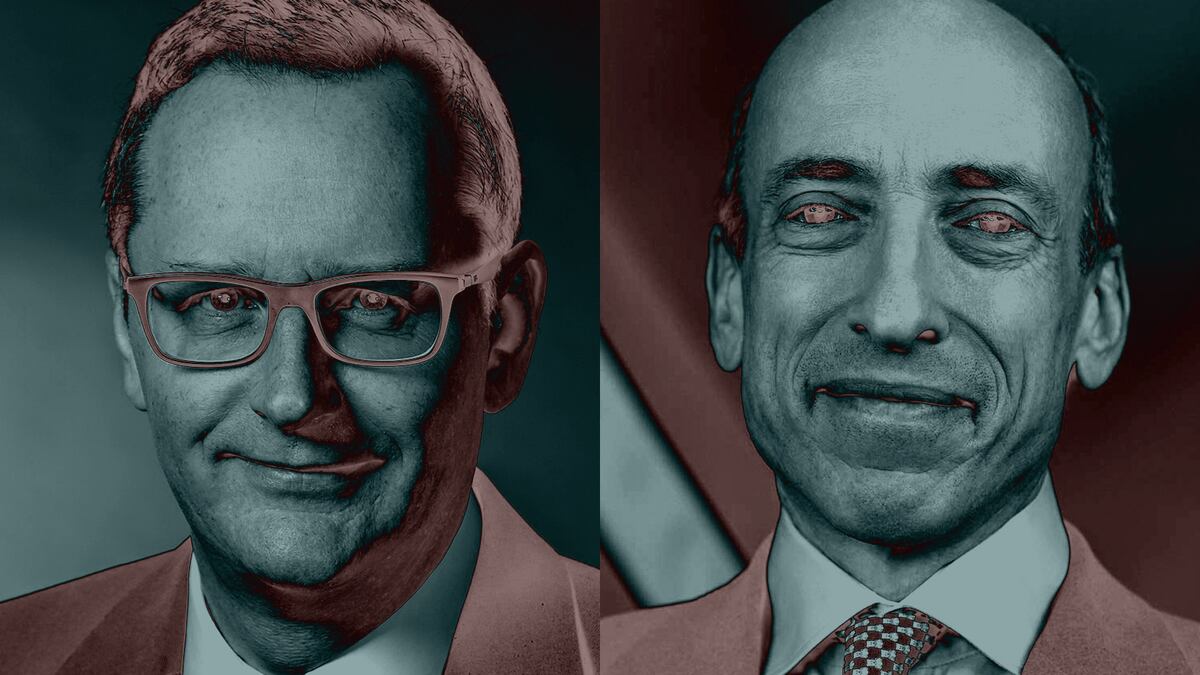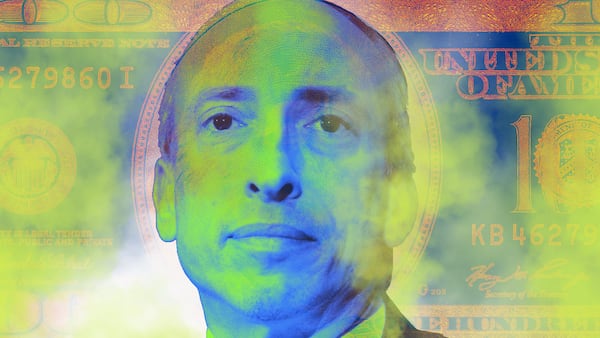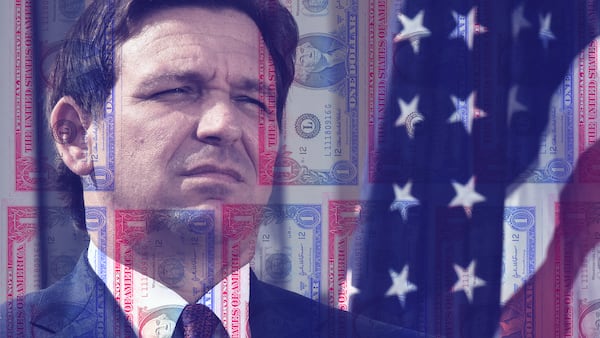- US crypto is falling behind as the EU leads the charge to get crypto-specific rules in place, industry fears.
- MiCA provides definitions for what it’s regulating – a clear approach lacking in the US. It will also allow crypto businesses to “passport” their offerings all over the EU.
- But MiCA still has some gaps that may leave areas of the industry in the cold.
Europe is leading the charge to get crypto specific rules in place, giving it an edge over the US and rest of the world.
In April, the European Parliament will finalise the EU’s landmark crypto-specific framework. But industry observers fear that a widening divergence between the bloc and the US could limit the global potential of decentralised finance and crypto.
“Nowhere is this more visible than in the fragmented and contentious approach we see to how US regulators are determining jurisdiction over cryptoassets,” Jannah Patchay, director of consultancy Markets Evolution, told DL News.
“Lacking clear definitions and parameters, it has the potential of giving rise to such massive divergence that an unbridgeable regulatory chasm will open up between the US and the EU and other jurisdictions.”
Competitive edge
Investors are seemingly already bullish about the EU ahead of MiCA coming into force.
Venture capital investments into European crypto startups reached an all-time high of $5.7 billion last year, while global and US venture funding contracted, according to research from RockawayX.
MiCA is complex, but it gives EU crypto a massive edge – so much so that some critics say it’s a land grab meant to shore up the bloc’s dominance. These critics cite measures in MiCA, such as limits it imposes on non-euro denominated stablecoins, to back up this assertion.
Land grab or no, the US crypto industry envies MiCA. The regulation sets out definitions of the assets that fall under its scope and how these will be treated – a clarity US crypto industry participants say is sorely lacking in their own country.
Congress has yet to pass any substantive crypto-specific laws, leaving regulation mainly to the market regulators.
As a result, both the Securities and Exchange Commission, and the Commodity Futures Trading Commission have attempted to bring in crypto under their respective jurisdictions.
NOW READ: Gensler tells lawmakers crypto exchanges taunt SEC saying ‘catch us if you can’
The SEC chair Gary Gensler has claimed almost all cryptoassets as securities, while the CFTC chair Rostin Behnam has similarly argued that many assets are commodities.
Both agencies have pelted industry players with law enforcement actions this year.
In the absence of regulatory clarity, ongoing litigation takes on high stakes. The judgement in the SEC versus Ripple case, which the industry expects imminently, as well as the brewing battle between the agency and Coinbase, will set important precedents for how the US treats cryptoassets in future.
NOW READ: Europe’s MiCA offers crypto utopia for Americans in a banking crisis. But it’s not that simple
What is coming in MiCA?
MiCA is a complex regulation inspired by the EU’s sprawling financial markets regime. Like MiFID II, it emphasises transparency, stable markets and consumer protection.
It will cover a range of activities, including token issuance and listing, and services like custody.
NOW READ: BlackRock’s tokenisation push is just the start — private asset boom may hit $290tn
MiCA creates three subcategories of assets: e-money tokens, asset-referenced tokens, and a third for assets that don’t fit into the others. EMTs and ARTs capture stablecoins; the third category captures cryptocurrencies like Bitcoin.
Any crypto asset that doesn’t fall under MiCA will be regulated by MiFID II. These kinds of instruments are mainly assets like bonds that have been tokenised for trading on distributed ledgers by global banks.
Other benefits
The US is fragmented at state level. Each individual state has its own rules on crypto licensing and transmission of assets.
The same kind of patchwork has emerged in the EU, but MiCA should iron out many regional variations by imposing a standardised framework.
MiCA’s blanket approach will, for instance, offer a passporting regime enabling companies with a licence in one EU country to offer it across the bloc.
Bitstamp CEO Jean-Baptiste Graftieaux told DL News that while his company can currently passport its payments institution, it can’t passport the virtual asset service provider side of its business.
“Unfortunately, we are very, very restricted. It’s very fragmented and complex and very national,” Graftieaux said.
‘It’s very fragmented and complex and very national.’
He said he hopes MiCA will change this.
Not everyone is pleased about this. Local regulators in countries with crypto-friendly laws must now tighten their rules to fall in line with MiCA.
France, for example, had ambitions to be a crypto hub with a relatively straightforward registration process that saw Binance and Bitstamp, among others, sign up with the country’s Financial Markets Authority.
This month, the regulator’s representatives told a parliamentary hearing that they had to explain to market participants that some of the freedoms they have enjoyed may no longer exist once MiCA is implemented.
Gaps remain
However, the industry has noted several gaps in MiCA. For starters, they have complained that the finer points of what assets fit into each of MiCA’s three definitional buckets remain unclear.
MiCA is a critical first step but there will be more to do once it comes into force, Andrew Whitworth, policy director for EMEA at Ripple, told DL News.
The regulation was originally written on the back of the initial coin offerings boom that peaked in 2017, resulting in regulators viewing them as a primary threat.
NOW READ: The obscure SEC rule that critics worry is a backdoor attempt to regulate DeFi
“So some parts of MiCA may reflect these retail concerns rather than wider issues,” Whitworth said.
MiCA also largely leaves out non-fungible tokens – albeit very narrowly defined NFTs –and decentralised finance protocols. Neither is off the hook forever, though, as a review clause leaves the door open for future regimes.
The US, too, has no grip on DeFI at this point. However, Gensler has expressed concerns around DeFi lacking investor protection.
Additional reporting by Eric Johansson



